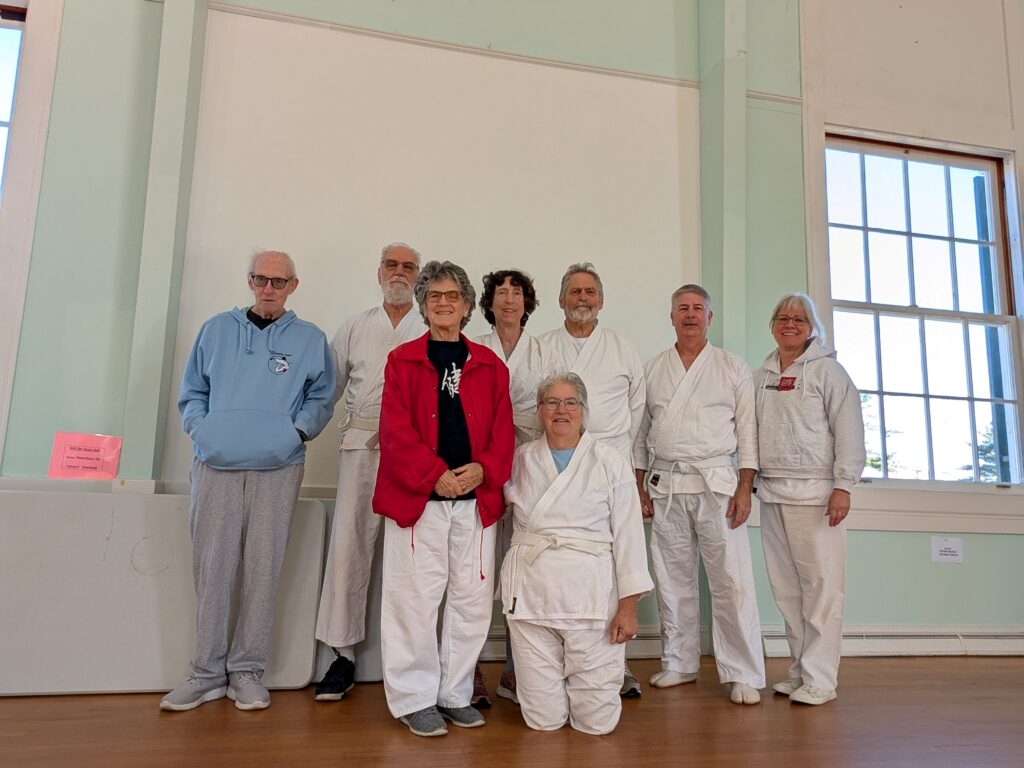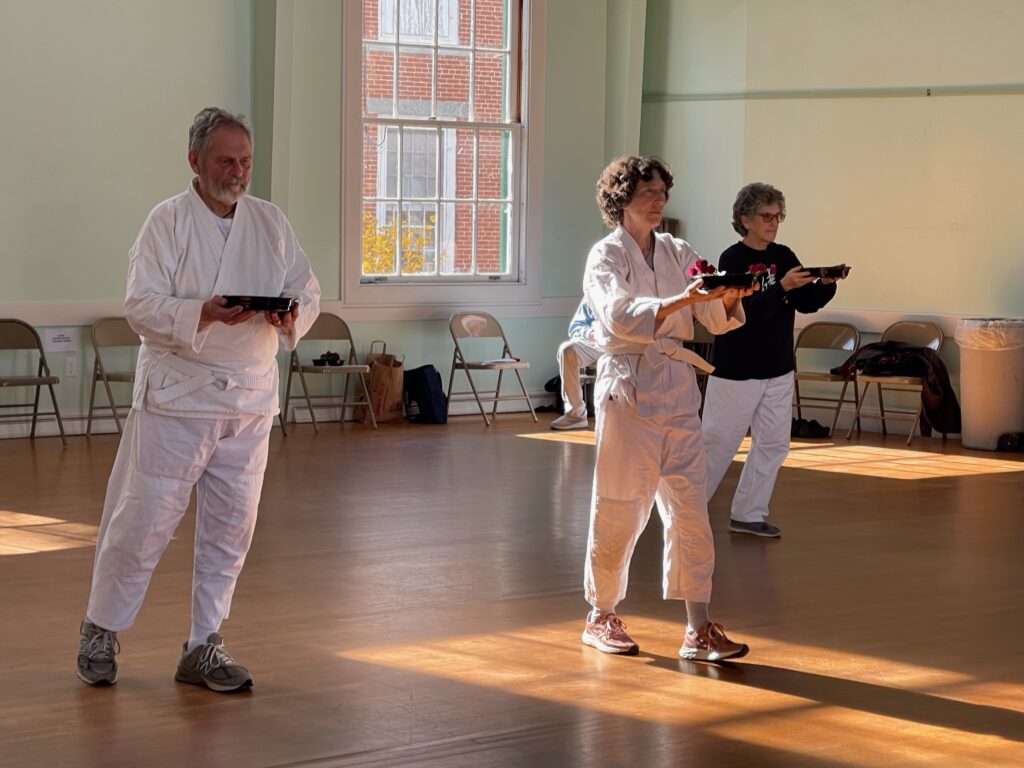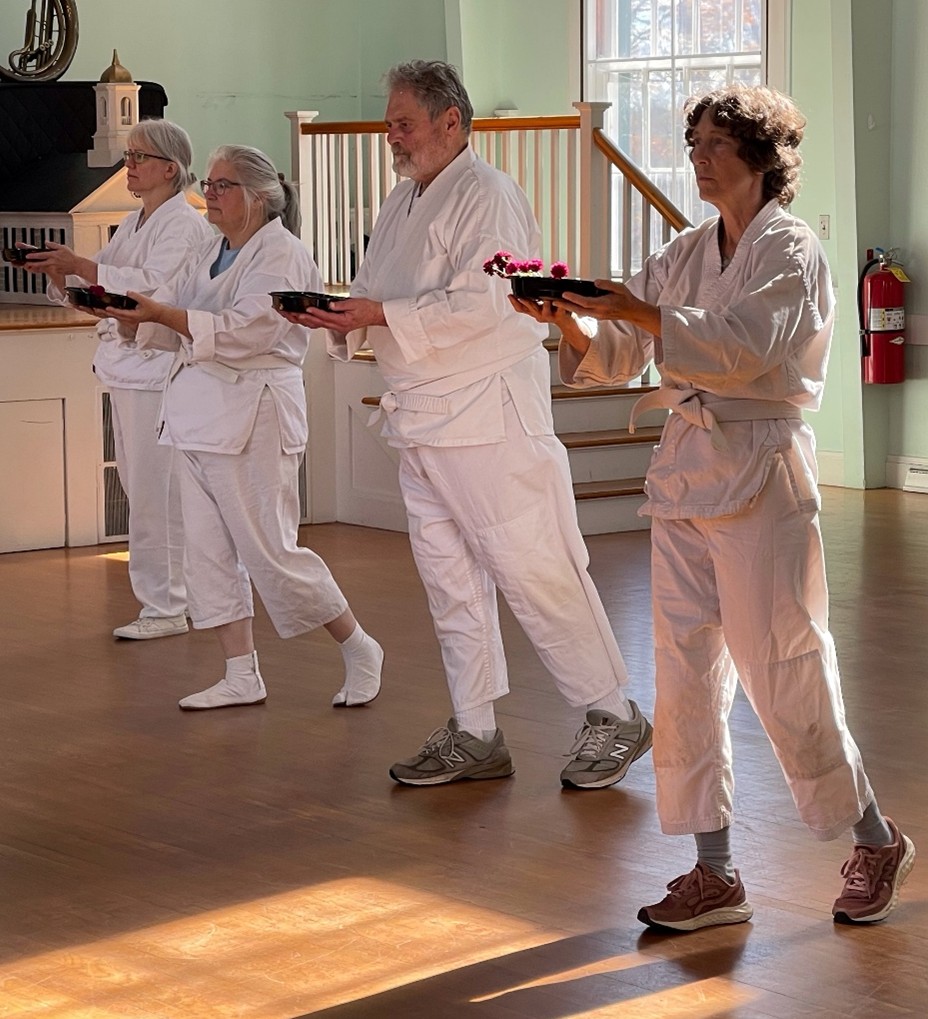by Stephen Billias
As an aging Shintaido practitioner, I find the meditative aspects of Shintaido: Taimyo, Ten-Position Meditation, Diamond Eight, Kenkain Hoko (Flower Walking) appeal to my body more than vigorous aerobic Shintaido.
At a recent Shintaido Northeast one-day workshop (co-led by every person in this picture), each of us gave a short gorei over the course of two keikos.

For my portion, we did a short study of Kenkain Hoko. As most of you know, Ken-Ka-i is position six in Shintaido’s ten position meditation, “offering flowers.” This segment included a comparison of Shintaido Kenkain Hoko Flower Walking with Zen Kinhin meditative walking. We looked at the differences and similarities between the two stepping styles and forms of meditation.
First we practiced the original Kenkain Hoko. We started with feet together and stepping in parallel. Some people find this stepping challenging because of difficulty of keeping their balance. Then we practiced Ito’s variation from the Taimyo network in which Ito described a reason for the change in stepping. He said he wanted to make Flower Walking easier for those with balance issues. He ended up with something like normal walking that includes stepping with a slight zig-zag step. Please check out the website link to get the complete description of the stepping.
When we tried Zen kinhin walking, the stepping was quite like Ito’s variation. Kinhin uses the hand position Kon-gō-i, also known as gassho-i, position number five in ten position meditation for lining up, and the shashu hand position from karate (one hand covering the other fist) instead of Ken-Ka-i while walking. There are other differences also. Kenkain Hoko is done in a line moving forward. Kinhin is done moving in a circle clockwise and following in footsteps of the person in front of you. When they take a left step you take a left step, and so on.
We also tried “fast walking kinhin” which is exactly as it sounds, still trying to follow in the footsteps of the person in front.
We finished doing Kenkain Hoko, with Ito’s modified, simpler steps, holding bowls of water and flowers:


Afterwards Master Instructor Michael Thompson pointed out that Aoki-sensei reversed the position of the hands in Bô-kyô-i (position number eight) and Jô-shin-i (position number nine): In Shintaido left hand is under right. In Zen it’s the opposite, right hand is under left. Also, in the karate from which Shintaido came, there’s a mudra of shielding or wrapping the right fist (active-yang) with the left hand (passive-yin). In Zen, shashu is the opposite, the right hand covers the left fist. Aoki-sensei made these choices deliberately, for reasons known only to him.
The group’s feeling was that though similar, the two forms of meditation expressed differently and created different meditative states.


